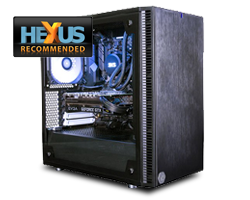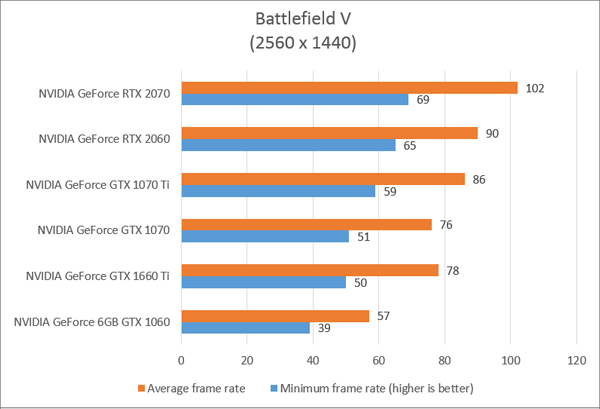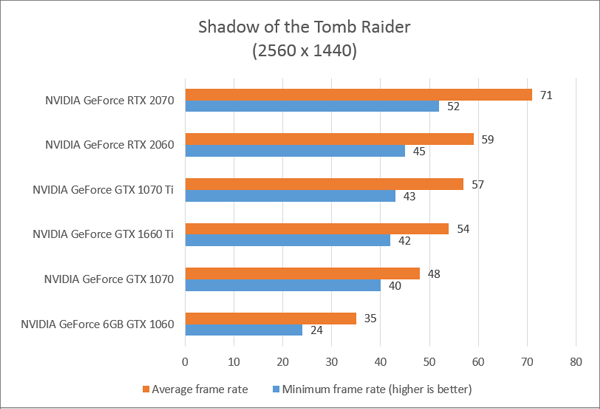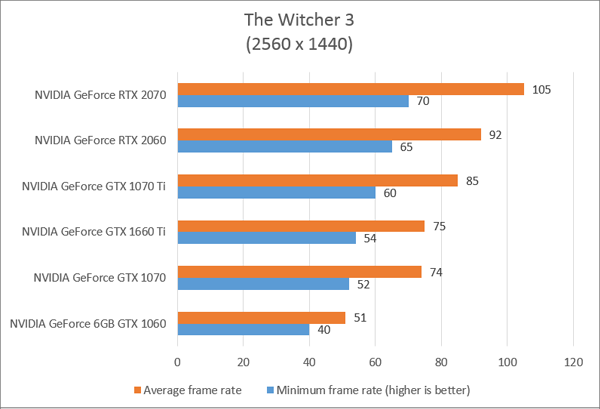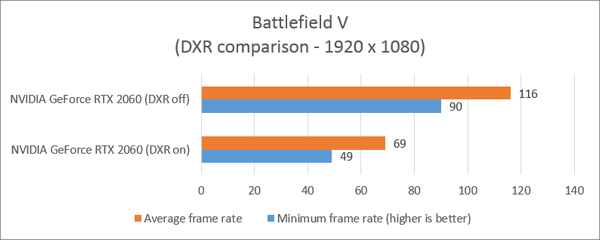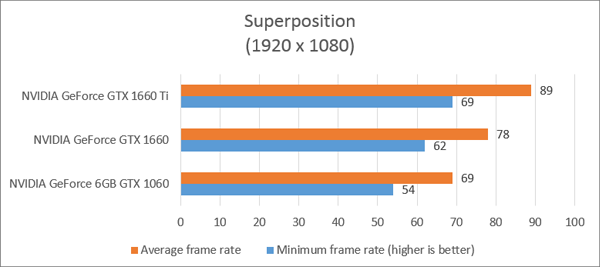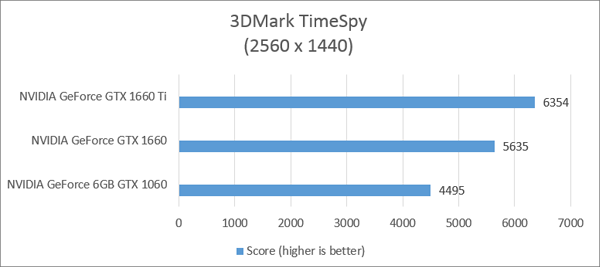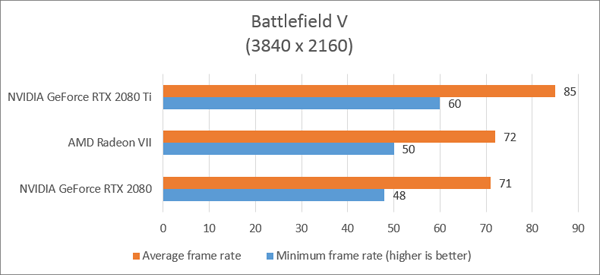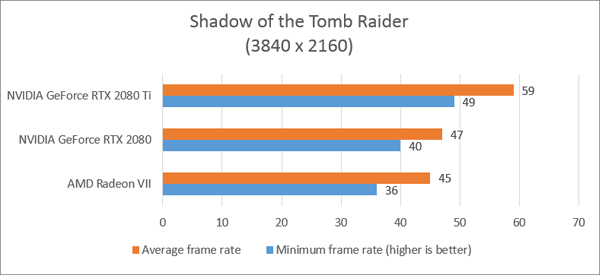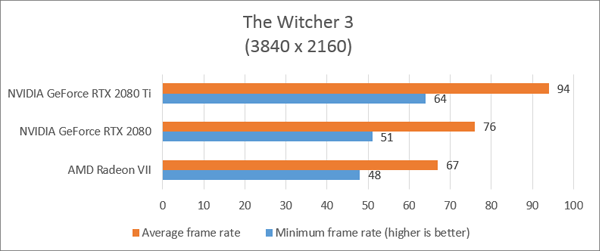SCANZONE
12.04.19 | ISSUE 61
After a few months hiatus Scanzone is back, and in this issue has a deluge of new graphics cards. While some of the new cards are ultra-high-end models with an eye watering price tag, some of the new cards are attractively priced and could be a great option for upgrading an ageing gaming PC. Read on to find out more.
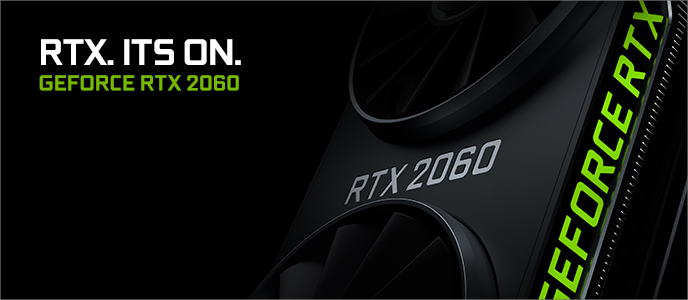
1. NVIDIA GeForce RTX 2060 and GTX 1660 Ti
While the first few models of the GeForce 20-series were undoubtedly fast, they also raised the bar in terms of pricing. As such, it’s good to see a more affordable model now making its way onto the market. The new GeForce RTX 2060 is a full Turing GPU, giving you the benefits of the new RTX technology such as DXR ray tracing and DLSS post-processing.
Normally the xx60-model of a GeForce series is a whole new GPU built from the ground-up, but this time round the 2060 is based on the same TU106 GPU as the existing 2070. Thus, while the 2070 has 2,304 CUDA cores, the 2060 has 1,920, a 17% drop. Meanwhile, the Tensor cores drops by 15% from 288 to 240, and the RT cores by 17% from 36 to 30. The 2060 also has less memory, being armed with 6GB of GDDR6. These reductions in capabilities are balanced out by an approximate £200 difference in price, making the 2060 the first 20-series graphics card to retail for well under £500, with a typical price of around £359.
Following up just a few weeks after the RTX 2060 NVIDIA also released the first cut-down GPU based on the Turing architecture, the GTX 1660 Ti. This makes use of the GTX rather than the RTX moniker because despite its Turing architecture, the new GTX 1660 Ti lacks any Tensor or RT cores so doesn’t support DXR or DLSS. However, as its armed with 1536 CUDA cores and 6GB of GDDR6 memory its not to be underestimated, as you’ll see in the benchmarks to come.
| Model | RTX 2060 | RTX 2070 | 6GB GTX 1060 | GTX 1660 Ti | GTX 1070 | GTX 1070 Ti |
|---|---|---|---|---|---|---|
| Architecture | Turing | Turing | Pascal | Turing | Pascal | Pascal |
| GPU | TU106 | TU106 | GP106 | TU116 | GP104 | GP104 |
| CUDA Cores | 1,920 | 2,304 | 1,280 | 1,536 | 1,920 | 2,432 |
| Tensor Cores | 240 | 288 | 0 | 0 | 0 | 0 |
| RT Cores | 30 | 36 | 0 | 0 | 0 | 0 |
| Base Clock | 1,365MHz | 1,410MHz | 1,506MHz | 1,500MHz | 1,506MHz | 1,607MHz |
| Boost Clock | 1,680MHz | 1,710MHz | 1,708MHz | 1,770MHz | 1,683MHz | 1,683MHz |
| Memory | 6GB GDDR6 | 8GB GDDR6 | 6GB GDDR5 | 6GB GDDR6 | 8GB GDDR5 | 8GB GDDR5 |
| Memory Controller | 192-bit | 256-bit | 192-bit | 192-bit | 256-bit | 256-bit |
| TDP | 160W | 175W | 120W | 120W | 150W | 180W |
| Typical price (inc VAT) | £359 | £549 | £229 | £269 | £349 | £449 |
We put two new GeForce cards through their paces in one of our 3XS Vengeance gaming PCs, which has an Intel Core i7 8086K CPU and 16GB of RAM. Given the high spec of the graphics cards we were testing all the benchmarks were run at a resolution of 2560 x 1440 at the highest quality settings with all the eye candy and post-processing turned on. All the cards were tested with the latest NVIDIA driver using a fresh install of Windows 10 Home.
The old 1070 and 1070 Ti graphics cards were a great choice for gaming at 2560 x 1440, so it’s good to see both models can render a modern game such as Battlefield V at a smooth frame rate. The new 2060 really showed its mettle though, playing Battlefield V 27% faster than the 1070, a great achievement considering both cards retail for a very similar price. The new 1660 Ti also proved very capable, producing near identical performance to the significantly more expensive 1070.
We also benchmarked the new 2060 in Shadow of the Tomb Raider, where it out performed the 1070 by a comfortable margin and just edged past the 1070 Ti. The new 1660 Ti once again showed off the benefits of its Turing pedigree, zipping past the older and more expensive 1070.
The last game we benchmarked was The Witcher 3. Once gain the new 2060 proved a significant 25% faster than the 1070, but only slightly faster than the 1070 Ti. And as in the other games the new 1660 Ti showed its worth against the older and more expensive 1070.
As the 2060 is a full implementation of the Turing architecture it supports DXR, which is Microsoft’s API for ray tracing in games. Battlefield V is the first game to support DXR via a recent series of patches, so we also wanted to see how the new 2060 handled the DXR effects such as ray-traced reflections.
While the 2060 achieved a smooth minimum framerate of 65fps in Battlefield V at 2560 x 1440, enabling DXR dropped the framerate by 45%, making the game choppy and unplayable. We therefore dropped the resolution to a less demanding 1920 x 1080. As you can from the graph, even at this resolution Battlefield V with DXR enabled is still very demanding, with the minimum frame rate dropping down from a silky smooth 90fps to 49fps. While this is a playable frame rate and so therefore it’s fair to say that the new 2060 will allow you to enjoy the gorgeous new ray traced reflections, but there’s a significant trade-off: to achieve a smooth framerate you’ll need to drop down the resolution.
Conclusion
The first few models of the new GeForce RTX 20-series set new records for performance, but also upped the bar for pricing, with the flagship 2080 Ti model retailing for well over £1000.
The fourth member of the series, the new RTX 2060, is a more moderate affair, retailing for around £359. Armed with 1,920 CUDA cores, 240 Tensor cores and 30 RT cores plus 6GB of GDDR6 memory it proved capable of playing the most demanding games at 2560 x 1440 smoothly. Most importantly of all the new RTX 2060 is significantly faster than the old GTX 1070, which retails for a very similar price.
Moreover, the new RTX 2060, being Turing based supports advanced new features such as DXR ray tracing and DLSS post processing, which make games look even better. As such it’s clear that the new GeForce RTX 2060 should be at the top of your shopping list if you have around £350 to spend on a new graphics card.
Lower down the stack the new GeForce GTX 1660 Ti is in some ways an even more interesting card. While it lacks the DXR and DLSS support of the more powerful RTX 2060, it offers similar performance to the old GTX 1070, yet retails for significantly less, at around £269, making it something of a bargain.
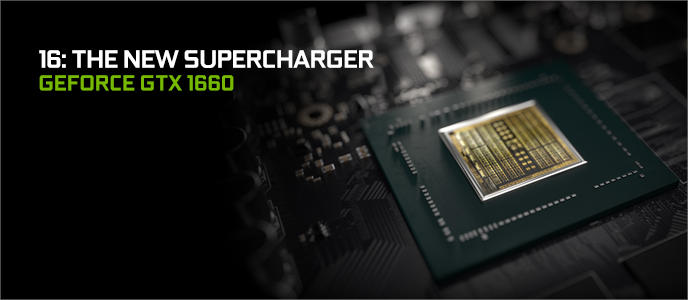
2. NVIDIA GeForce GTX 1660
While NVIDIA has been busy launching lots of new high-end graphics cards, it’s only recently that it’s started to refresh its mid-range offerings. Like the GTX 1660 Ti that launched a few weeks ago, the GTX 1660 is based on the Turing architecture and so is made using a 12nm process. Just like the Ti version it also lacks any Tensor cores or RT cores, but this is eminently sensible really as it doesn’t have enough horsepower to enable DXR or DLSS anyway. Instead, what you get is a mid-priced GPU, retailing for around £199, equipped with 1,408 CUDA cores and 6GB of GDDR5 memory.
As the table below shows this is a fair amount more CUDA cores than the 6GB version of the ageing GTX 1060, and as both GPUs are accompanied by the same amount of memory the new GTX 1660 should be a fair bit faster.
GeForce GTX – series card specifications
| Model | GTX 1660 | 6GB GTX 1060 | GTX 1660 Ti |
|---|---|---|---|
| Architecture | Turing | Pascal | Turing |
| GPU | TU116 | GP106 | TU116 |
| CUDA Cores | 1,408 | 1,280 | 1,536 |
| Tensor Cores | 0 | 0 | 0 |
| RT Cores | 0 | 0 | 0 |
| Base Clock | 1,530MHz | 1,506MHz | 1,500MHz |
| Boost Clock | 1,785MHz | 1,708MHz | 1,770MHz |
| Memory | 6GB GDDR5 | 6GB GDDR5 | 8GB GDDR6 |
| Memory Controller | 192-bit | 192-bit | 192-bit |
| TDP | 120W | 120W | 120W |
| Typical price (inc VAT) | £199 | £229 | £269 |
We put the new GeForce GTX 1660 along with some other similarly priced graphics cards through its paces in one of our 3XS Gamer PCs which had an Ryzen 5 2600 processor and 8GB of memory. All the cards were tested with the latest NVIDIA driver using a fresh install of Windows 10 Home. The Superposition benchmark outputs both a score and the frame rate, the latter being displayed in the graph. We prefer to use frame rates as this gives you more insight into a graphics cards capabilities than an abstract score. What the graph shows is that with a minimum frame rate of 62fps the new GTX 1660 is ideally suited to playing hard-to-run games at 1080p, plus it is a noticeable 15% faster than the old GTX 1060. We’ve also included the more powerful GTX 1660 Ti in this graph, although its power is arguable wasted at 1080p, and it would be better partnered with a 1440p monitor.
Although 3DMark TimeSpy runs at 1440p rather than 1080p it still shows there is a wide spread in performance between NVIDIA’s three mid-range GeForce GTX GPUs. In fact, 3DMark showed an even bigger difference of 25% between the old GTX 1060 and the new GTX 1660 than Superposition did.
Although we didn’t have time to benchmark any real games on the new GTX 1660, the results from the two synthetic benchmarks, Superposition and 3DMark TimeSpy show that the new card is between 15 and 25% faster than the previous generation 6GB GTX 1060. Considering that you can pick up a GTX 1660 for less than a 6GB GTX 1060 the new card is clearly superior value for money, although GTX 1060 pricing is expected to drop shortly. Just be careful not to be swayed by a premium-priced GTX 1660 with a factory overclock and tricked-out crazy cooler as you pick up a GTX 1660 Ti card for the same price.
Scan stocks a wide range of GeForce GTX 1660 graphics cards from all board manufacturers, including big names such as EVGA and Asus plus gaming PCs featuring the new cards built by award-winning 3XS Systems.
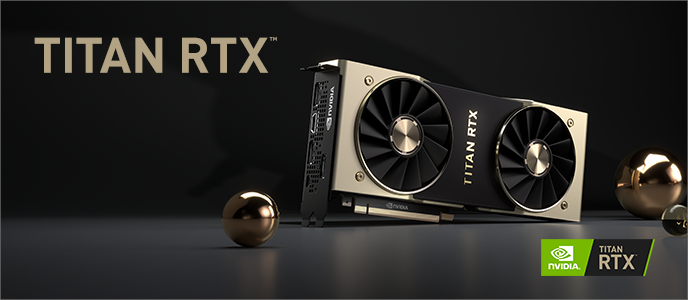
3. NVIDIA TITAN RTX
At the opposite end of the spectrum from the new GeForce cards is the new TITAN RTX graphics card. TITAN cards fit in a small but important part of NVIDIA’s GPU line-up, filling in the gap between the consumer-grade GeForce cards and the enterprise-grade Quadro and Tesla cards. As such, you’re more likely to find a TITAN card in a workstation rather than a gaming PC.
That’s not to say you can’t use the TITAN RTX for gaming, because as you can see from the table below it has the 256 more CUDA cores than the GeForce RTX 2080 Ti, although in real terms this only means an extra 4% or so higher frame rates in games. However, stick a TITAN RTX in a workstation, especially if you’re developing deep learning models and its worth quickly becomes apparent.
| Model | TITAN RTX | RTX 2080 Ti | TITAN V |
|---|---|---|---|
| Architecture | Turing | Turing | Volta |
| GPU | TU102 | TU102 | GV100 |
| CUDA Cores | 4,608 | 4,352 | 5,120 |
| Tensor Cores | 576 | 544 | 640 |
| RT Cores | 72 | 68 | 0 |
| Base Clock | 1,350MHz | 1,350MHz | 1,200MHz |
| Boost Clock | 1,770MHz | 1,545MHz | 1,455MHz |
| Memory | 24GB GDDR6 | 11GB GDDR6 | 12GB HBM2 |
| Memory Controller | 138-bit | 352-bit | 3072-bit |
| TDP | 280W | 260W | 250W |
| Typical price (inc VAT) | £2,399 | £1,159 | £2,799 |
For instance, in our Tensorflow benchmark with a batch size of 128, the new TITAN RTX was able to process 620 img/sec versus the 616 img/sec of the older TITAN V. While this is less than 1% of a performance increase, and so might not sound all that impressive, the TITAN RTX manages this fewer resources than the TITAN V and as a result is a significant £400 less expensive.
What’s more, the TITAN RTX has double the RAM of the TITAN V, enabling it to handle much larger datasets, an often overlooked aspect of system design when speccing up a workstation for deep learning. As with all high-end NVIDIA GPUs two TITAN RTXs can communicate using a special NVLink bridge instead of over the motherboard, providing much greater speed and the ability to pool the memory of both GPUs together for outstanding performance.
Scan is an NVIDIA Elite Solution Provider for Deep Learning and the new NVIDIA TITAN RTX GPU is available now in our range of Deep Learning workstations.
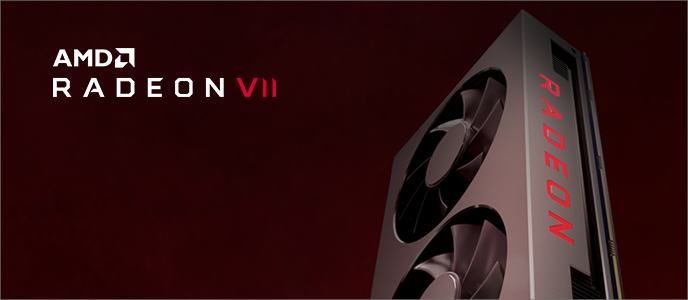
4. AMD Radeon VII
AMD hasn’t been idle either and has released a new high-end gaming graphics card, the Radeon VII. While the GPU it’s based on, the Vega 20, isn’t strictly new as it’s already found in several enterprise-grade GPU accelerators, the Radeon VII does have the distinction of being the world’s first gaming GPU built using the advanced new 7nm process. To put that into context NVIDIA is using a 12nm process for Turing GPUs and Intel’s CPUs are made using 14nm process.
The 7nm process means that AMD has been able to ramp up the clock speed of the Radeon VII, and as a result its 3,840 stream processors buzz along at up to 1,800MHz compared to 1,546MHz of the previous-generation 14nm Radeon RX Vega 64.
The Radeons VII also has double the memory, being armed with 16GB of ultra-fast HBM2 RAM, connected to the GPU via a huge 4,096-bit controller, providing an astonishing 1,024GB/sec of memory bandwidth. In comparison the NVIDIA GeForce RTX 2080 Ti has just 11GB of memory and 616GB/sec of memory bandwidth. On paper then the Radeon VII is an absolute beast and is in many ways superior to the GeForce RTX 2080 Ti, let alone the RTX 2080.
However, putting the Radeon VII through its paces at 4K versus NVIDIA’s flagship cards revealed quite a different picture. The first game we tested, Battlefield V, revealed that despite its impressive paper specs the Radeon VII is more of less the same speed as the GeForce RTX 2080, with near identical minimum and average frame rates. We saw a similar pattern in Shadow of the Tomb Raider and The Witcher 3 as well as you can see in the graphs below.
With its £699 price and performance roughly on par with the GeForce RTX 2080 the AMD Radeon VII is by no means a bad graphics card. However buyers should be aware that it’s by far the noisiest card on the market right now with multiple independent reviewers measuring its noise between 45 and 50dBA, enough to make anyone want to reach for a pair of headphones.

5. NVIDIA GeForce RTX laptops
With multiple different Turing-based GeForce GPUs to choose from it, it should come as no surprise that NVIDIA has started to roll out these GPUs into laptops as well. The first three models to hit laptops are the RTX 2080, 2070 and 2060. All three have similar specs to their desktop equivalents, and so the RTX 2080 has 2944 cores and 8GB of memory, the RTX 2070 has 2304 cores and 8GB of memory while the RTX 2060 has 1920 cores and 6GB of memory. All three models support DXR and DLSS. There are also MaxQ versions of these GPUs, which run at a slightly lower clock speed, enabling them to be built inside thinner and lighter laptops.
Scan sells a wide range of GeForce RTX laptops, including customisable models from 3XS Systems.
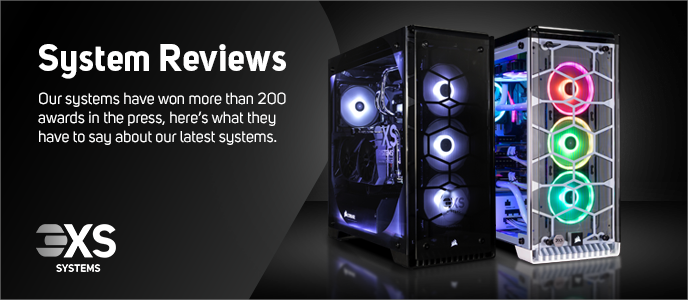
"Incredible punch for real time viz"
Develop 3D was the first reviewer to take a look at the awesome new NVIDIA Quadro RTX 4000 graphics card. This professional grade card was built into a Pro Graphics workstations by 3XS Systems, the WI4000 Viz, along with an Intel Core i9 99900K processor. According to the review it is ‘A workstation packing an incredible punch for real time viz, VR and GPU rendering but it’s also no slouch when comes to CPU intensive workflows. What you can get out of the Quadro RTX 4000 GPU is quite phenomenal, but this machine also has plenty of grunt for CPU-centric workflows, both single and multi-threaded. In summary, it’s a fantastic all-round workstation that can handle many different viz workflows and one we’d highly recommend’
You can check out the 3XS WI4000 Viz on our website.

"A great advert for Max-Q RTX 2070 graphics"
PC Pro reviewed our 3XS LG15 Vengeance Max-Q RTX gaming laptop which is powered by the NVIDIA GeForce RTX 2070 graphics card. Scoring 4 out of 5 stars and winning a Recommended Award PC Pro wrote that ‘In day-to-day use you’ll struggle to notice the difference between this laptop and a top-end desktop PC. Kudos to Scan, because this is a strong demonstration of the RTX 2070 Max-Q’s power.’
You can check out the 3XS LG15 Vengeance Max-Q RTX laptop on our website.

"An eminently likeable upgrade"
HEXUS reviewed the one of our new 3XS Gamer PCs based on the NVIDIA GeForce GTX 1060 Ti graphics card. Winning a Recommended Award HEXUS wrote that the system ‘Targets the savvy shopper seeking up-to-date tech at an agreeable fee’.
You can read the full review on HEXUS You can check out the 3XS Gamer 1660 Ti on our website.
